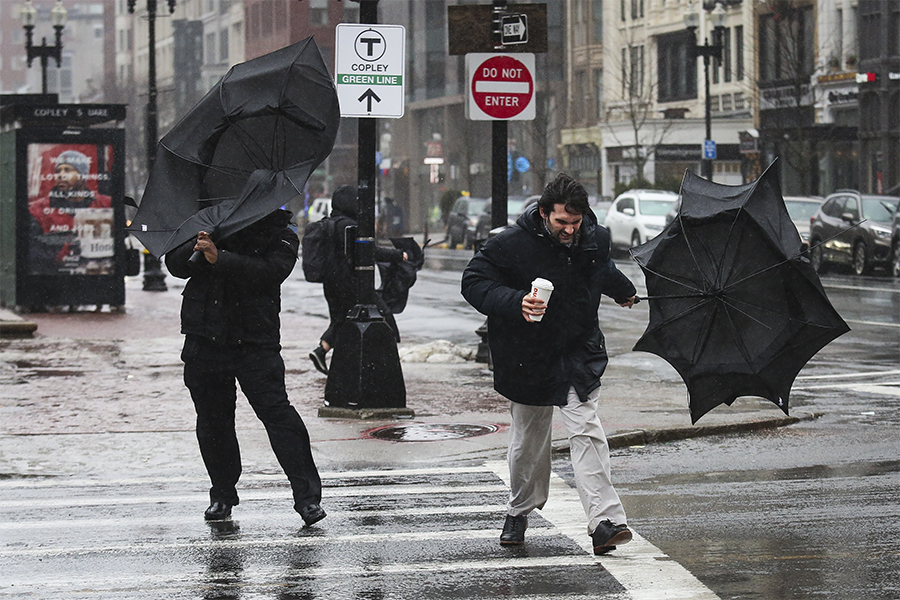Everyone has experienced the unmistakable first drop of a rainstorm that no one expected in the middle of a bright and sunny day. While the weather app mentions nothing but clear skies, people suddenly find themselves running to find cover before the downpour ensues. The truth is that hour-to-hour weather is notoriously difficult to predict, which can sometimes lead to inaccurate forecasts, due to constant changes in atmospheric variables.
Modern-day weather forecasting began in 1922 upon Lewis Fry Richardson’s publication of “Weather Forecasting by Numerical Process” in the Cambridge University Press. In his work, Richardson theorized that meteorological variables, such as atmospheric pressure, measured at certain latitudes, could be used in differential equations to predict weather change. However, Richardson’s idea of using mathematical models to forecast weather was initially dismissed due to the long hours it would take just to predict one day’s weather. According to “Encyclopedia Britannica,” “the main drawback to his mathematical technique for systematically forecasting the weather was the time necessary to produce such a forecast.” Calculating 24 hours of a weather forecast usually took three months.
The main drawback to his mathematical technique for systematically forecasting the weather was the time necessary to produce such a forecast.
After the introduction of computers in the 1940s, Richardson’s idea was revisited since now computers could almost instantaneously solve these mathematical equations. Today, this method is known as traditional Numerical Weather Prediction (NWP) and is the basis for almost all weather predictions. NWP is known for its strong accuracy in broad long-term predictions, but when it comes to specific hour-by-hour forecasts, NWP is limited in predicting the weather.
With recent development in artificial intelligence, meteorologists are looking at a technology called Graph Neural Networks (GNNs). GNNs are groundbreaking as they have the potential to develop accurate hour-to-hour forecasts for the following six hours. The system accomplishes this by first collecting specific data about the current weather and then analyzing similar past weather patterns to make a prediction. GNNs can use over five million physical variables relating to atmosphere pressure levels to define a weather pattern. Additionally, GNNs can take into account the specific shape of the Earth and produce multi-resolution models.
Calculating 24 hours of a weather forecast usually took three months.
Well, how exactly do GNNs work? First, meteorologists and researchers train GNNs under two main sets of data so the machines know past weather patterns. The first set is known as the ERA5 analysis. The ERA5 is a fifth-generation reanalysis of the weather that provides an hourly estimate of weather variables across a range of climates for the past 40 years. The ERA5 can provide a variety of data, but the main extracted variables are temperature; geopotential height; specific humidity; and the eastward, westward, and vertical components of the wind. To maximize efficiency, GNNs download every 3 hours of ERA5 data from 1979 to 2021. The second set of data GNNs use is NOAA’s Global Forecast System (GFS) data from 2021. This data set is simply the collection of weather forecasts from the year 2021. Like the ERA5, the same six variables that were obtained from the ERA5 are extracted from GFS for every three hours.
Once GNNs have been trained, three components of the GNN model — the encoder, the processor, and the decoder — process this information to make weather predictions. The encoder begins the prediction by translating current weather measurements from a latitude-longitude grid and placing them onto a spherical grid. Next, the processor reads the spherical grid and compares these measurements to data from the ERA5 and GFS to pinpoint instances where past weather variables were similar to the current weather variables. The decoder then places past variables onto a latitude-longitude grid and analyzes how these past weather patterns under similar conditions played out to predict a six-hour weather change. Compared to the equations Richardson solved in the mid-1900s, GNNs perform this process notably quickly, averaging 0.04 seconds to create a six-hour model and 0.8 seconds to create a five-day forecast.
GNNs have a promising future beyond creating weather forecasts and have the potential to create predictions in climate change. With rising temperatures and changing climates, GNNs could potentially warn us of dangerous effects regarding global warming. And who knows? The weather outside today could predict the weather 10 years from now.
International Journal of Environmental Science and Development (2010). ISSN: 2010-0264
Physics.ao-ph (2010). arXiv: 2202.07575v1


